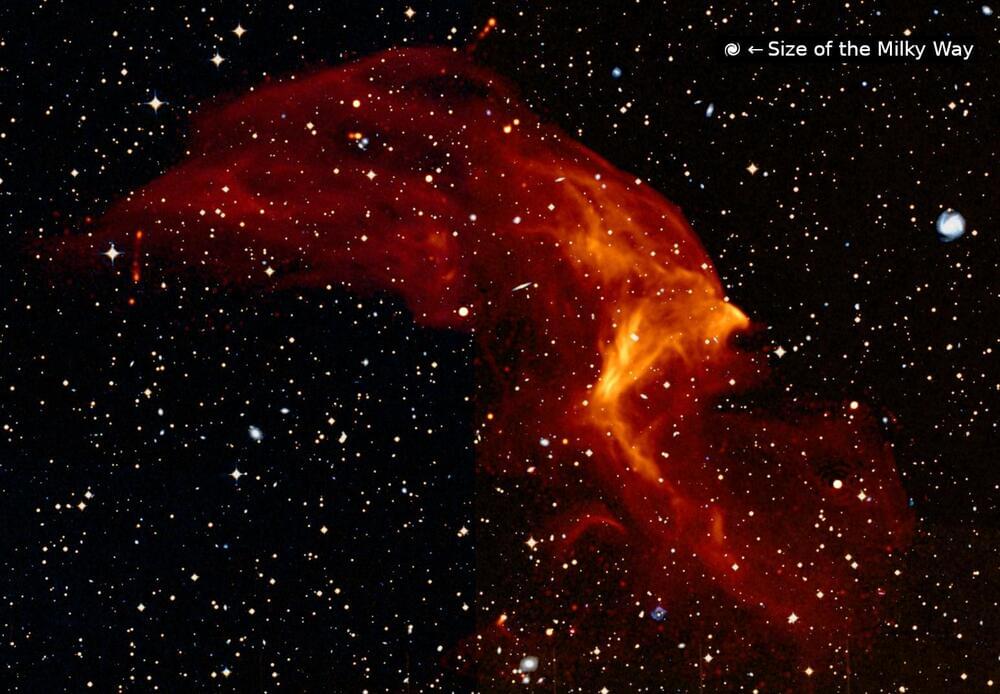Astronomers have a thing for big explosions and collisions, and it always seems like they are trying to one-up themselves in finding a bigger, brighter one. There’s a new entrant to that category – an event so big it created a burst of particles over 1 billion years ago that is still visible today and is 60 times bigger than the entire Milky Way.
That shockwave was created by the merger of two galaxy clusters to create a supercluster known as Abell 3667. This was one of the most energetic events in the universe since the Big Bang 0, according to calculations by Professor Francesco de Gasperin and his time from the University of Hamburg and INAF. When it happened over 1 billion years ago, it shot out a wave of electrons, similar to how a particle accelerator would. All these years later, those particles are still traveling at Mach 2.5 (1500 km/s), and when they pass through magnetic fields, they emit radio waves.









Comments are closed.